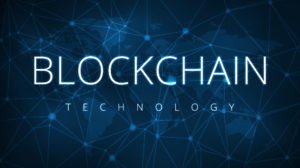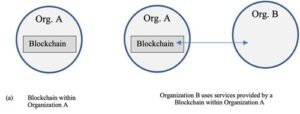Achieving a digitalized economy assumes a process of digital transformation with digital technologies being adopted and new management techniques to effectively manage the identification of suitable technologies; match technologies with organizational opportunities; and then administer the organization in the digitalized economy. Digital transformation involves new concepts, radical innovation, and radical organizational change across multiple organizational dimensions. Blockchains can be considered a form of digital transformation for organizations. An aspect of the radical nature of blockchains flows from the capabilities it can provide for trustworthy transactions between organizations. Blockchains are associated with a decentralized implementation architecture which often contradicts centralization assumptions inherent in both IT infrastructure (e.g., Client-Server) and in organizational processes and management structures. Blockchains also enable Decentralized Autonomous Organizations (DAOs) which may be better considered as a software implementation of organizational governance rather than a typical technology for process automation.

Blockchain Technology (including DAOs)
This creates opportunities for new business models by disintermediation of some parties to traditional transaction flows in the same industry or supply chain. Multiple parties have to agree to adopt the new style of transactions. Decentralization is an architectural approach to restructuring the power and influence of elements within an economic system. Early approaches to decentralized distributed computing (such as Autonomous Decentralized Systems (ADSs) focused on building operational resilience for large-scale infrastructure, more recent DAO innovations have focussed on the organizational aspects. Both intra-organizational and inter-organizational technology adoption tend to be analyzed with similar frameworks such as the Technology, Organization, and Environment (TOE) framework. While most technology adoption frameworks focus on a single organization, blockchain exhibits network effects when deployed across multiple organizations.

Blockchain ( & DAOs) in or between organizations
The digital transformation of an organization for the digitalized economy goes beyond mere technology adoption within existing organizations and includes new forms of digital native organizations such as DAOs. Scorecards and metrics have been applied in many areas within organizations from accounting to ethics; but multiparty technology adoption has an additional scope that metrics within a single organization do not. Metrics and scorecards help organizations evaluate their readiness for blockchain implementations. Organizational readiness and maturity metrics for effectively utilizing blockchains have to address the broad range of business considerations that management should consider when evaluating opportunities for digital transformation via blockchain. A digitalized economy, and blockchains, need readiness metrics that apply across organizations.
For additional information refer to Wright, S. A. (2022). Organizational Readiness/Maturity Considerations for Blockchain Adoption. In Handbook of Research on Digital Transformation Management and Tools (pp. 344-365). IGI Global.

